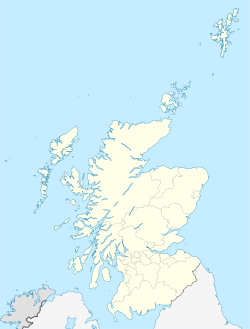 The chambered cairn in 2013 | |
| Location | Eday, Scotland, United Kingdom |
|---|---|
| Coordinates | 59°13′38″N2°46′21″W / 59.227299°N 2.772502°W |
| Type | Chambered cairn |
| Diameter | c. 18 meters |
| Height | c. 3 meters |
| History | |
| Material | Sandstone |
| Founded | c. 2750 BC |
| Periods | Neolithic |
| Site notes | |
| Ownership | Historic Scotland |
| Public access | Yes |
Vinquoy chambered cairn (grid reference HY56013809 ) is a Neolithic chambered cairn located on the island of Eday in Orkney, Scotland. The tomb probably dates to the early third millennium BC, and is similar in design to Maeshowe Neolithic tomb found on Mainland Orkney. Historic Environment Scotland established the site as a scheduled monument in 1936.
